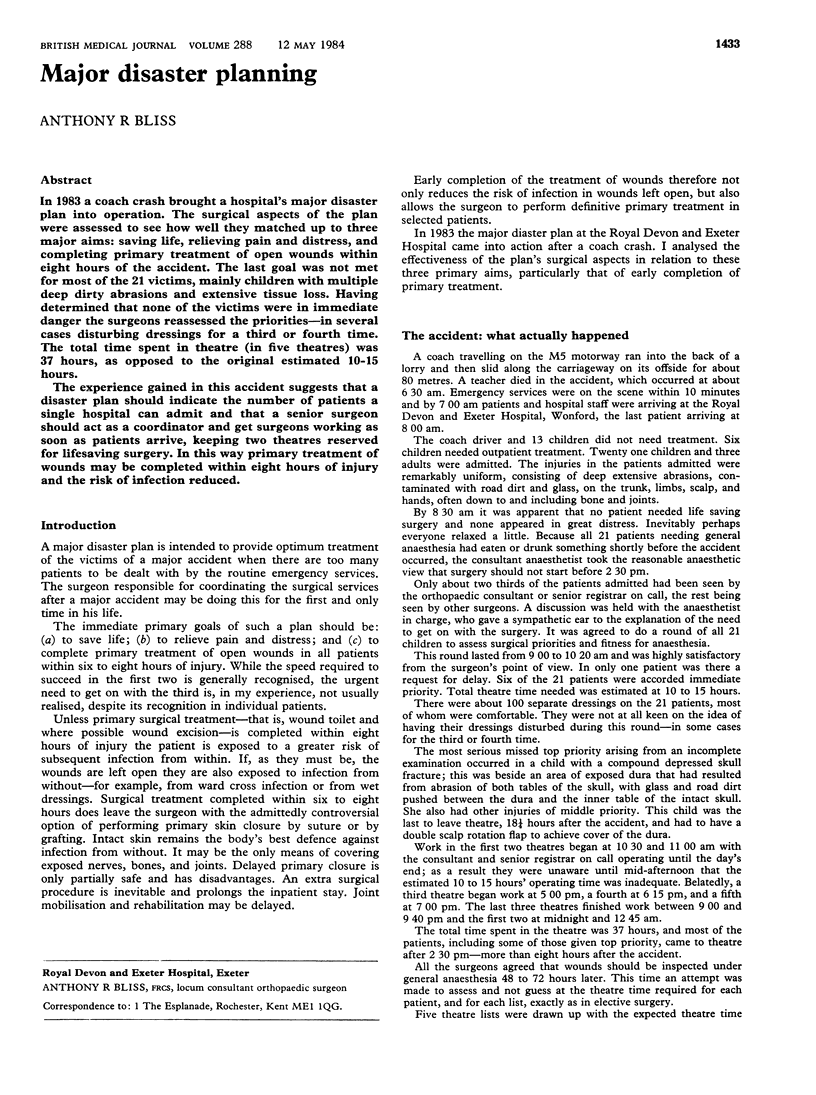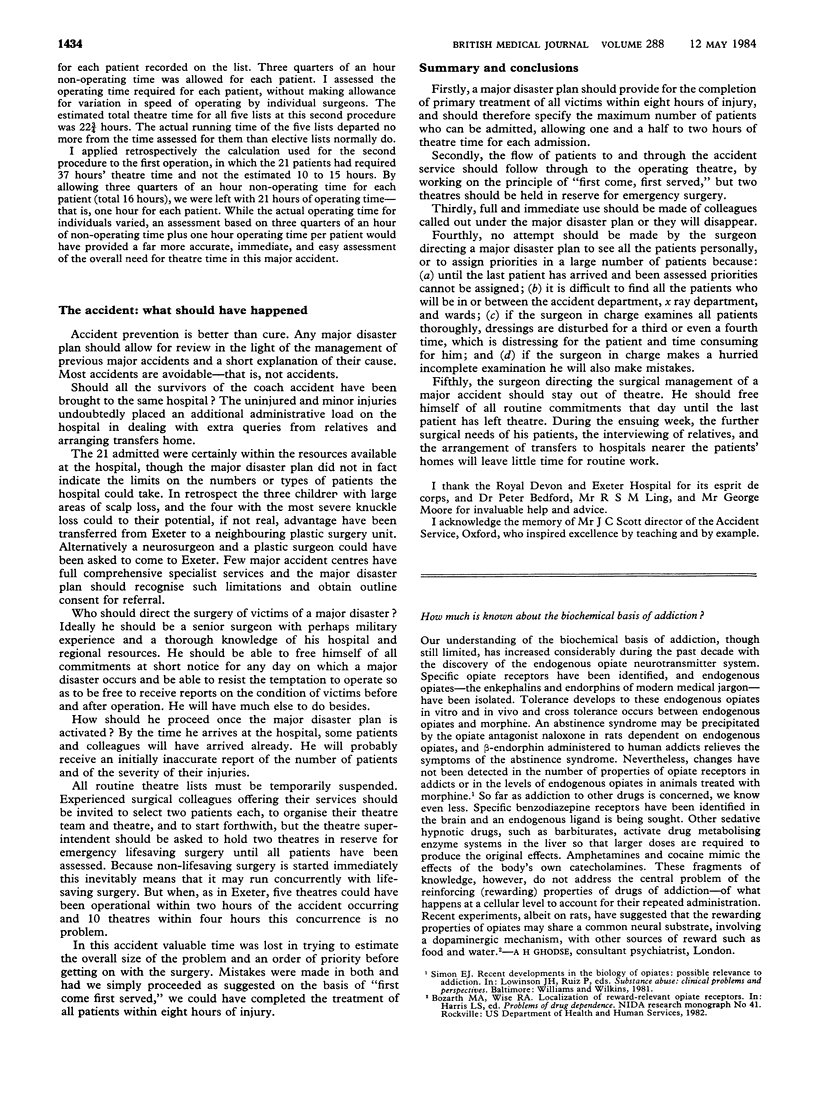Abstract
In 1983 a coach crash brought a hospital's major disaster plan into operation. The surgical aspects of the plan were assessed to see how well they matched up to three major aims: saving life, relieving pain and distress, and completing primary treatment of open wounds within eight hours of the accident. The last goal was not met for most of the 21 victims, mainly children with multiple deep dirty abrasions and extensive tissue loss. Having determined that none of the victims were in immediate danger the surgeons reassessed the priorities--in several cases disturbing dressings for a third or fourth time. The total time spent in theatre (in five theatres) was 37 hours, as opposed to the original estimated 10-15 hours. The experience gained in this accident suggests that a disaster plan should indicate the number of patients a single hospital can admit and that a senior surgeon should act as a coordinator and get surgeons working as soon as patients arrive, keeping two theatres reserved for lifesaving surgery. In this way primary treatment of wounds may be completed within eight hours of injury and the risk of infection reduced.
Full text
PDF



